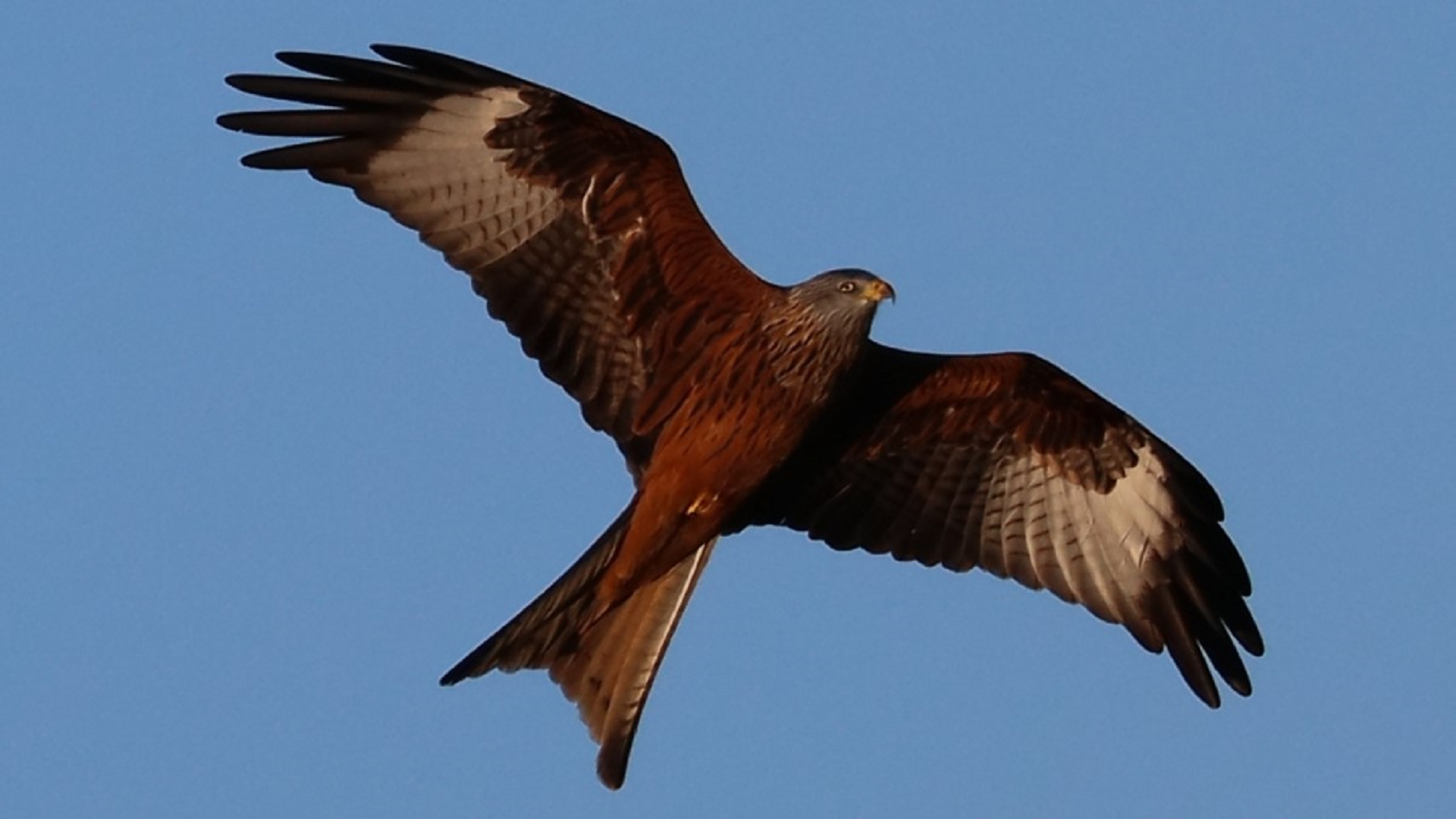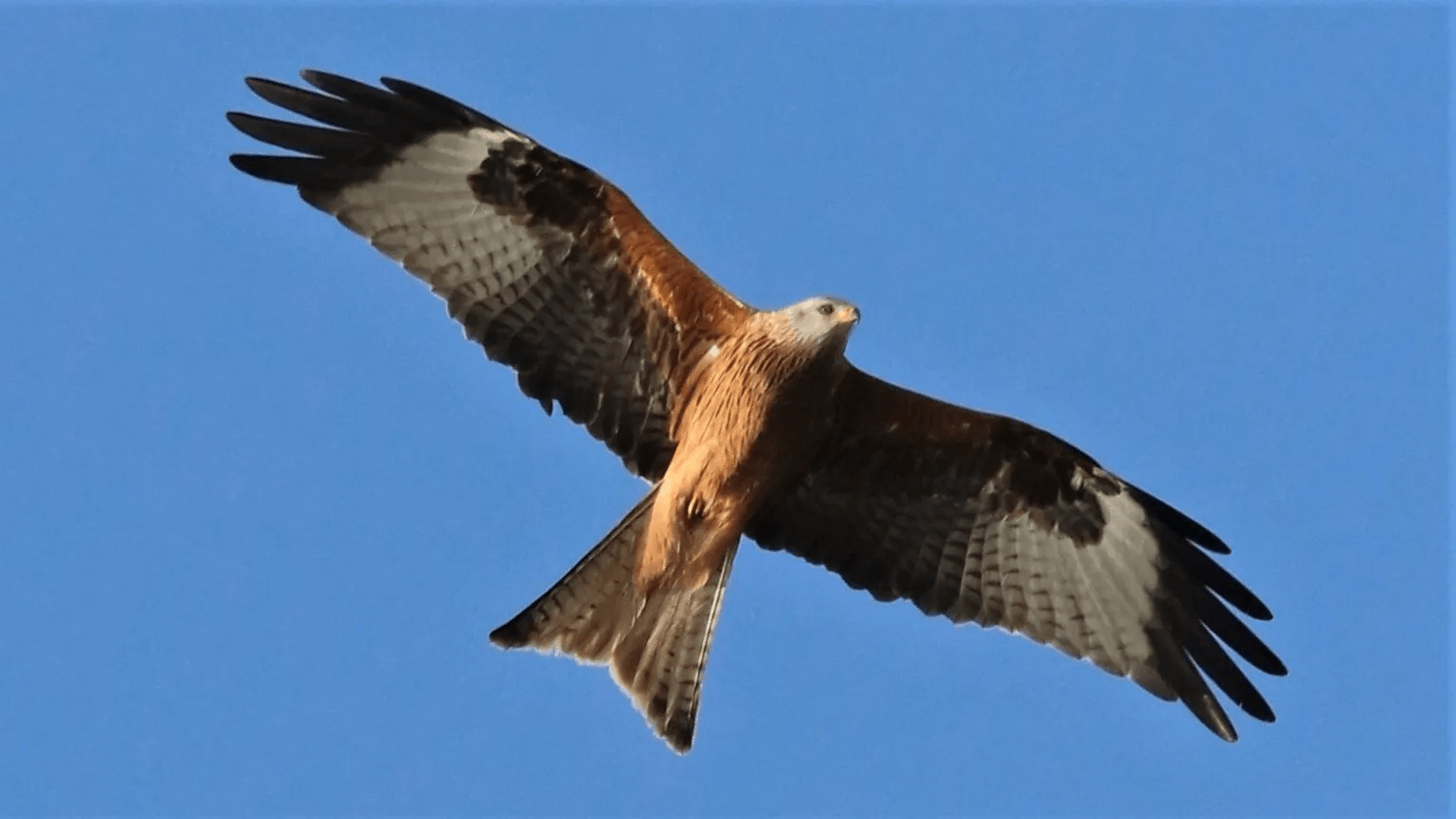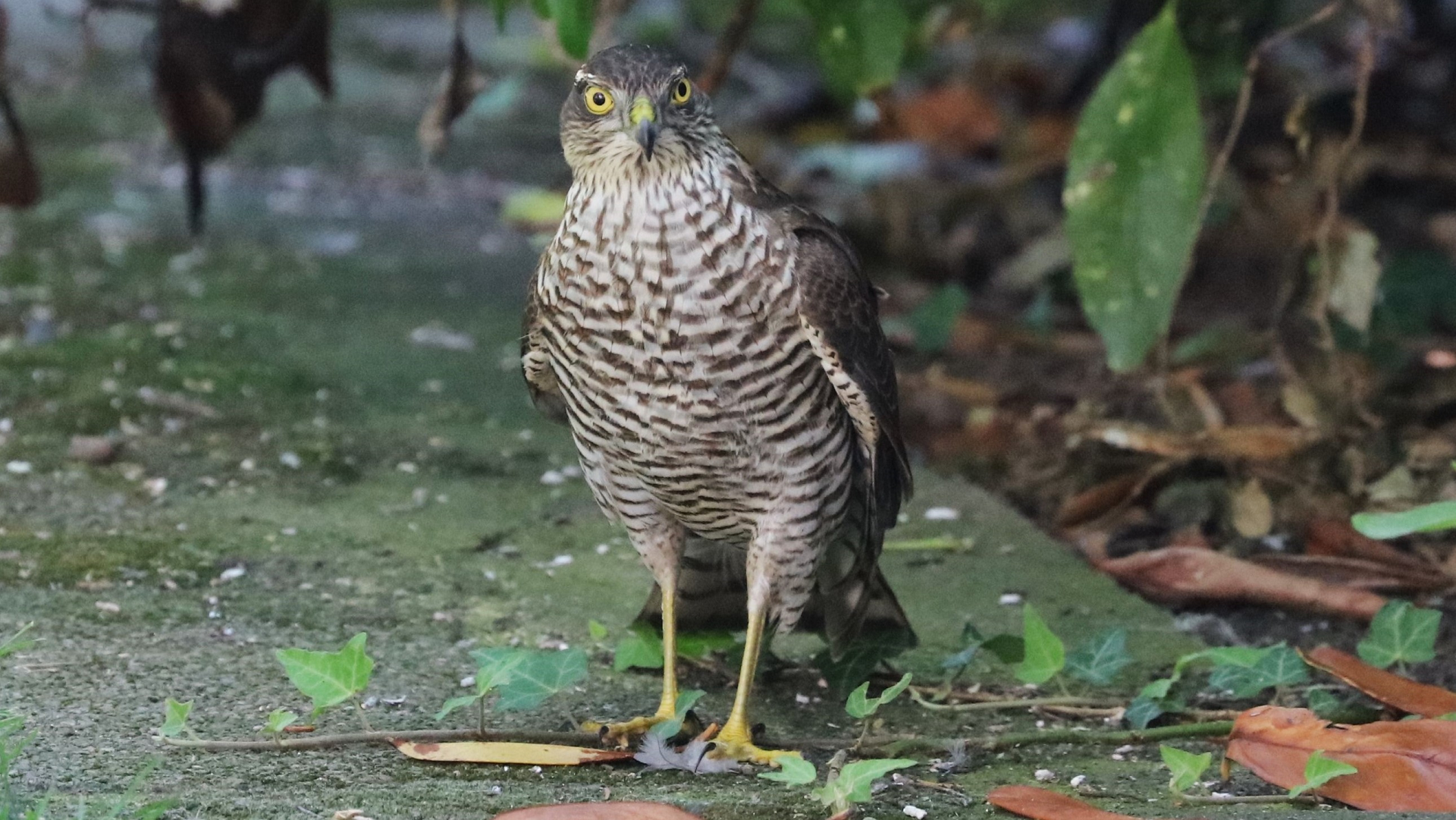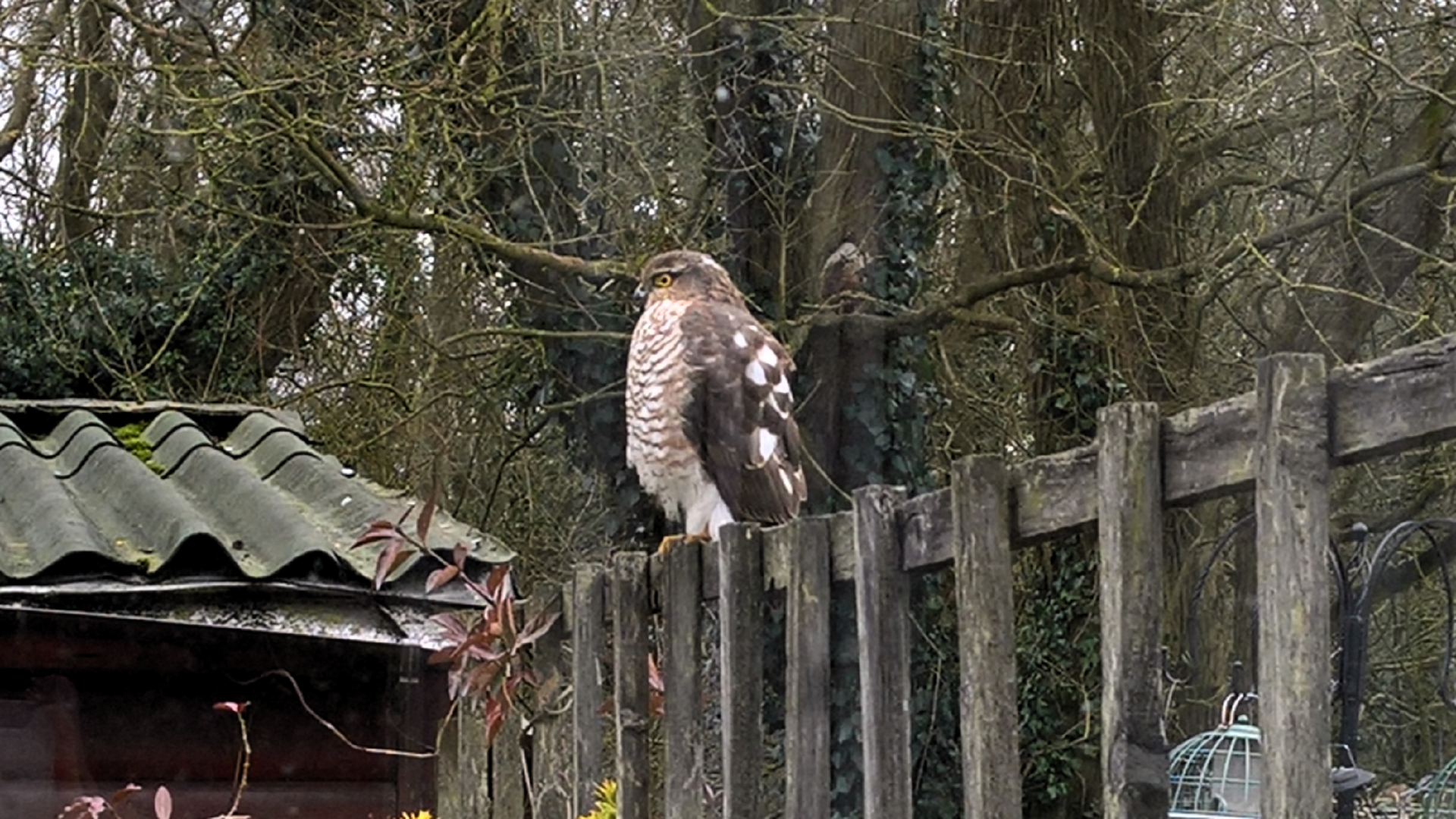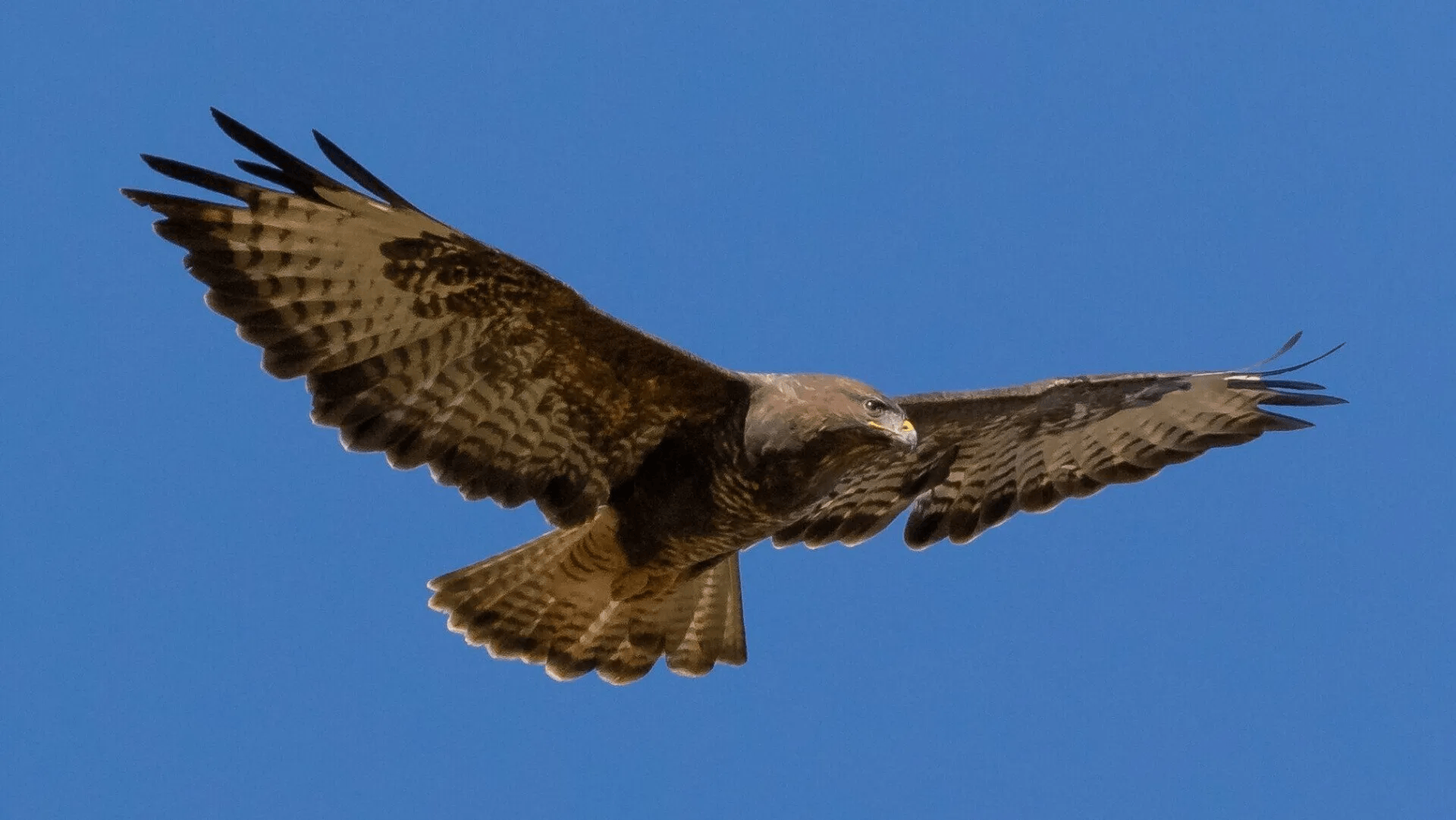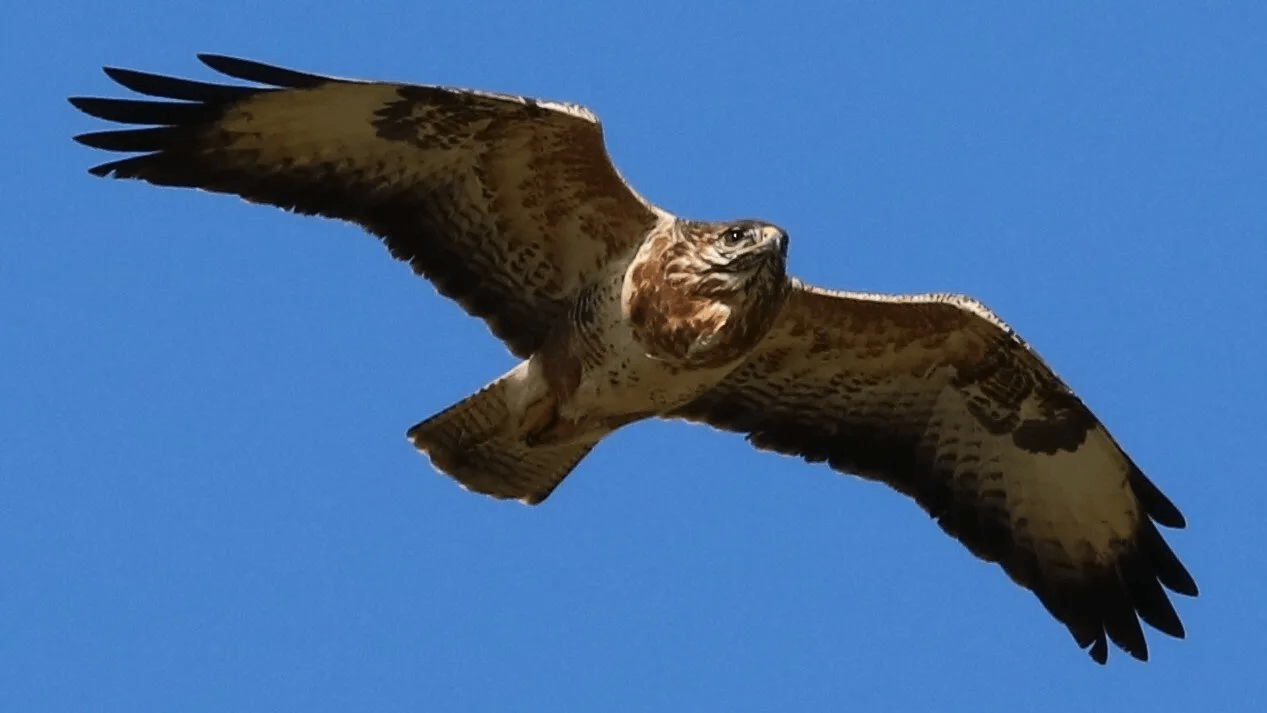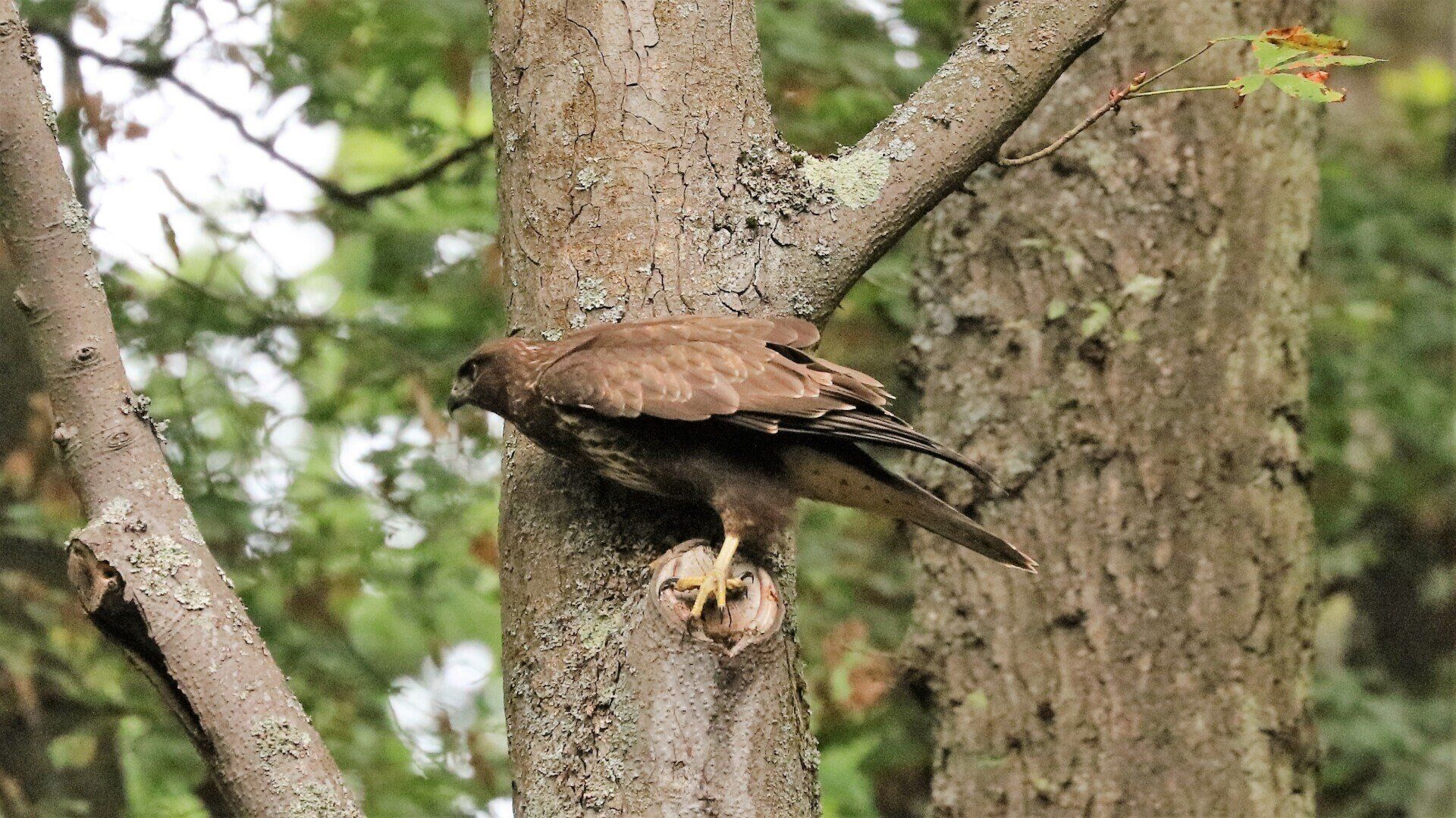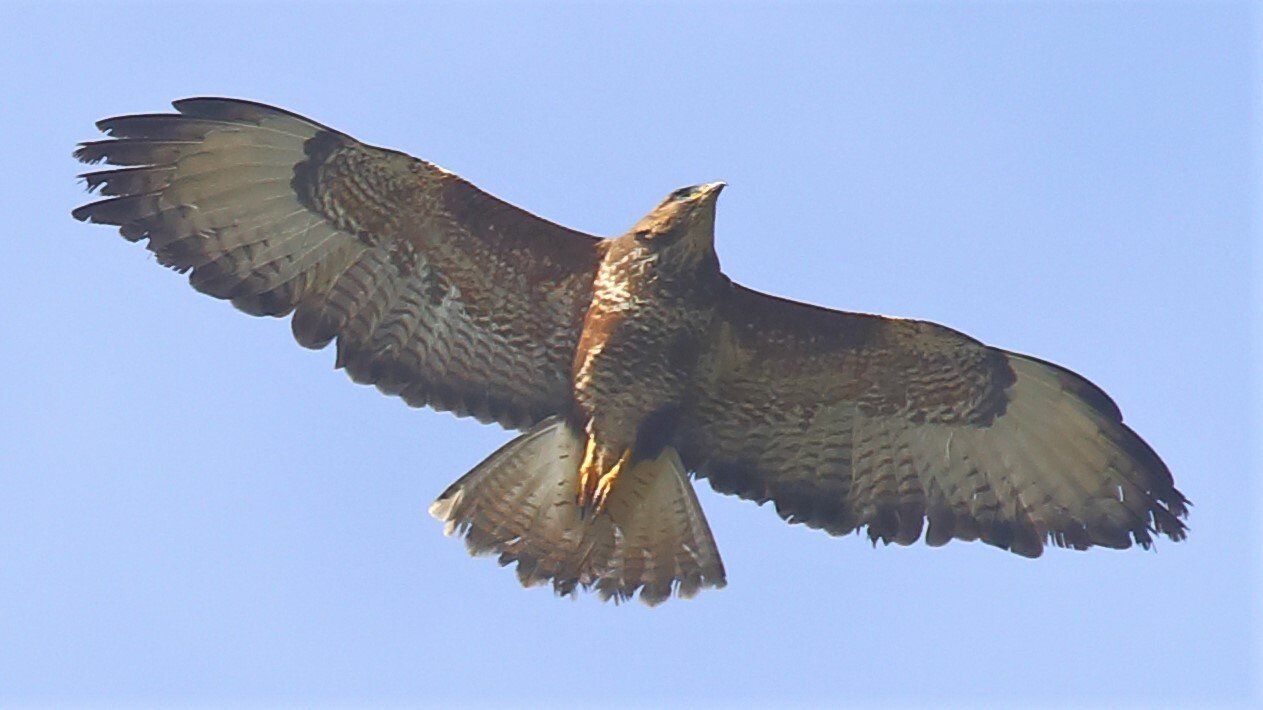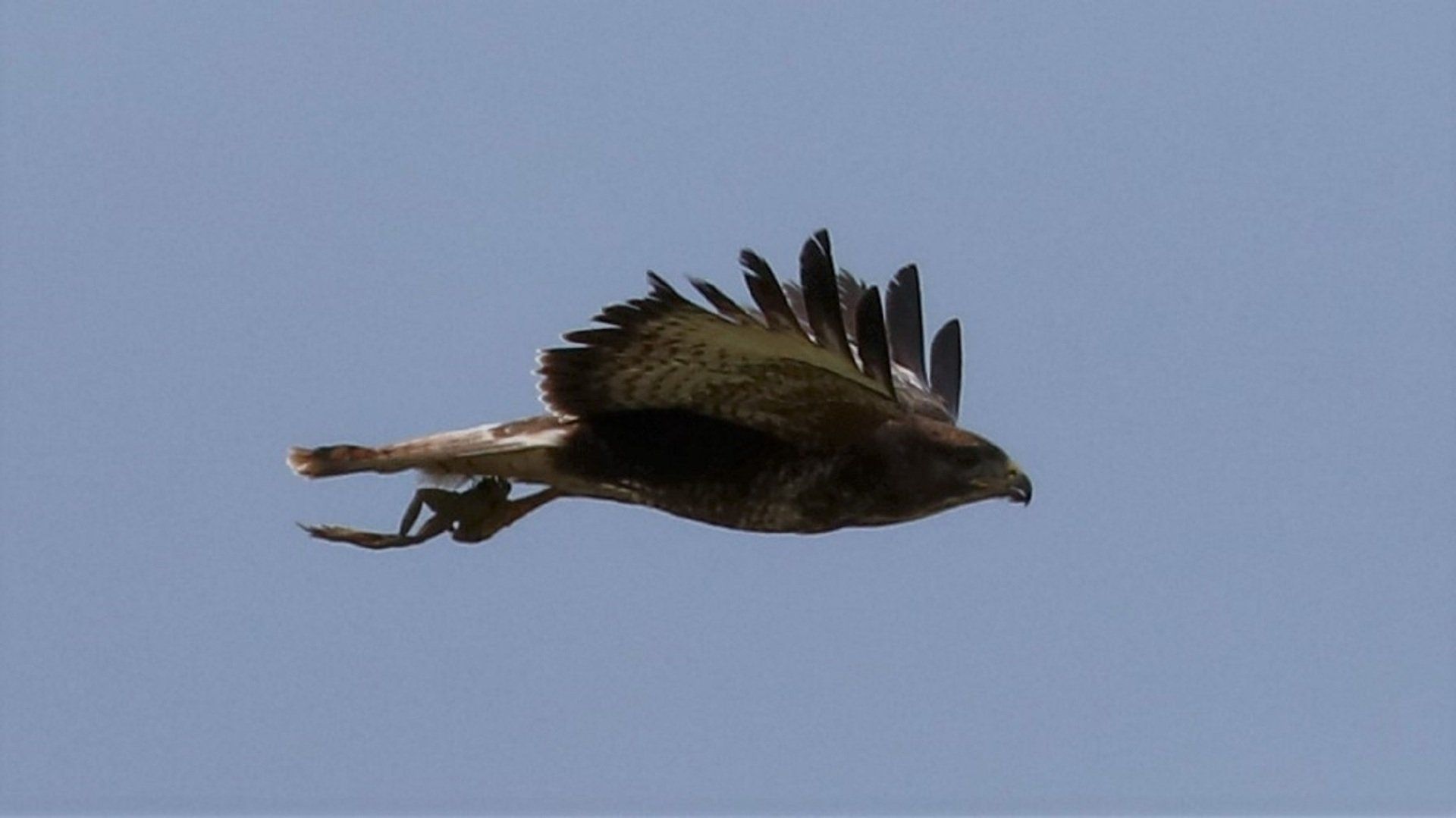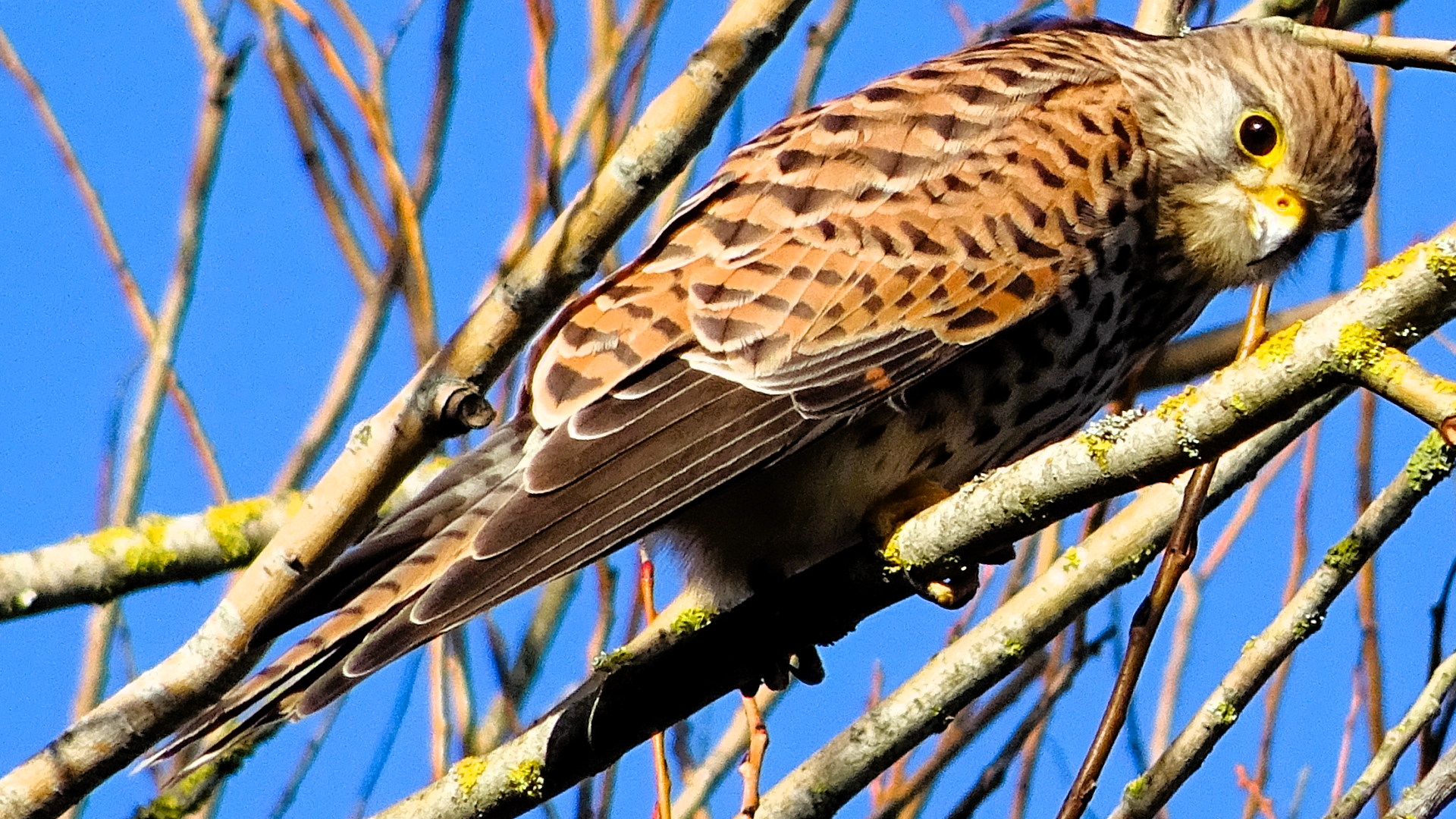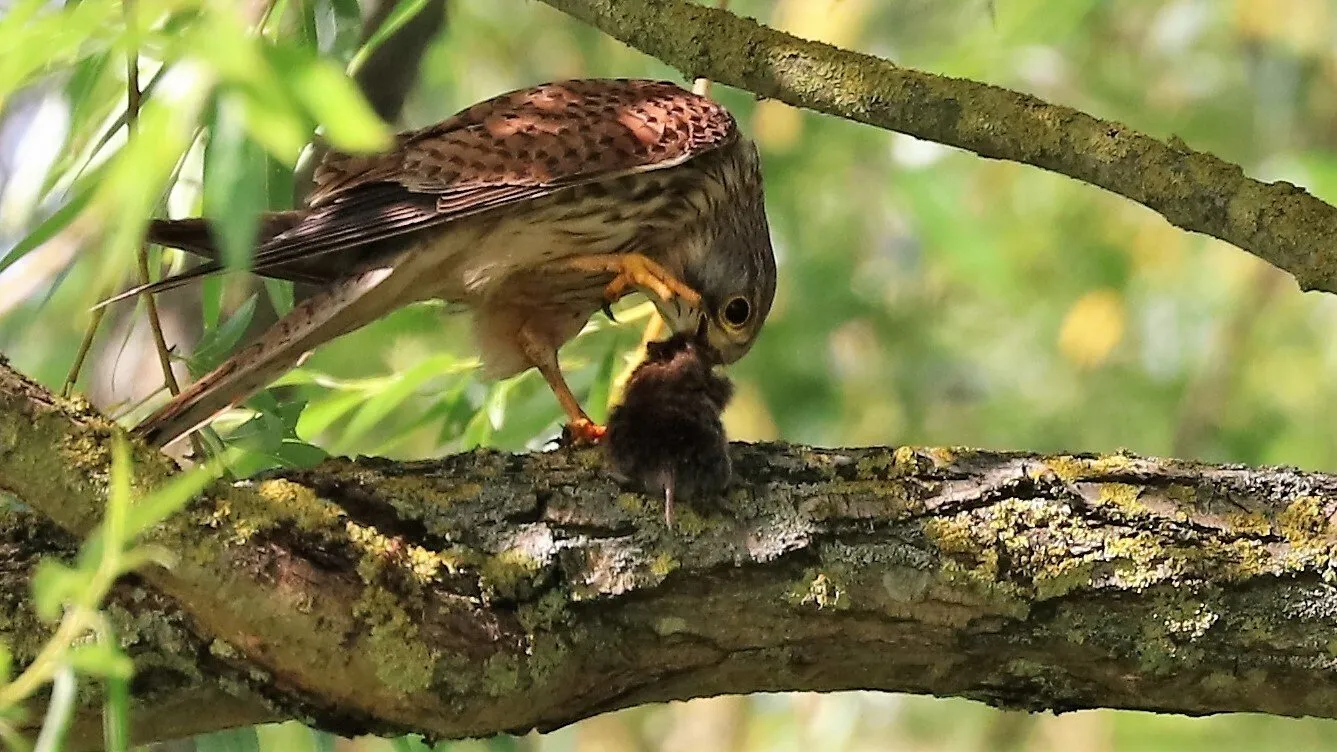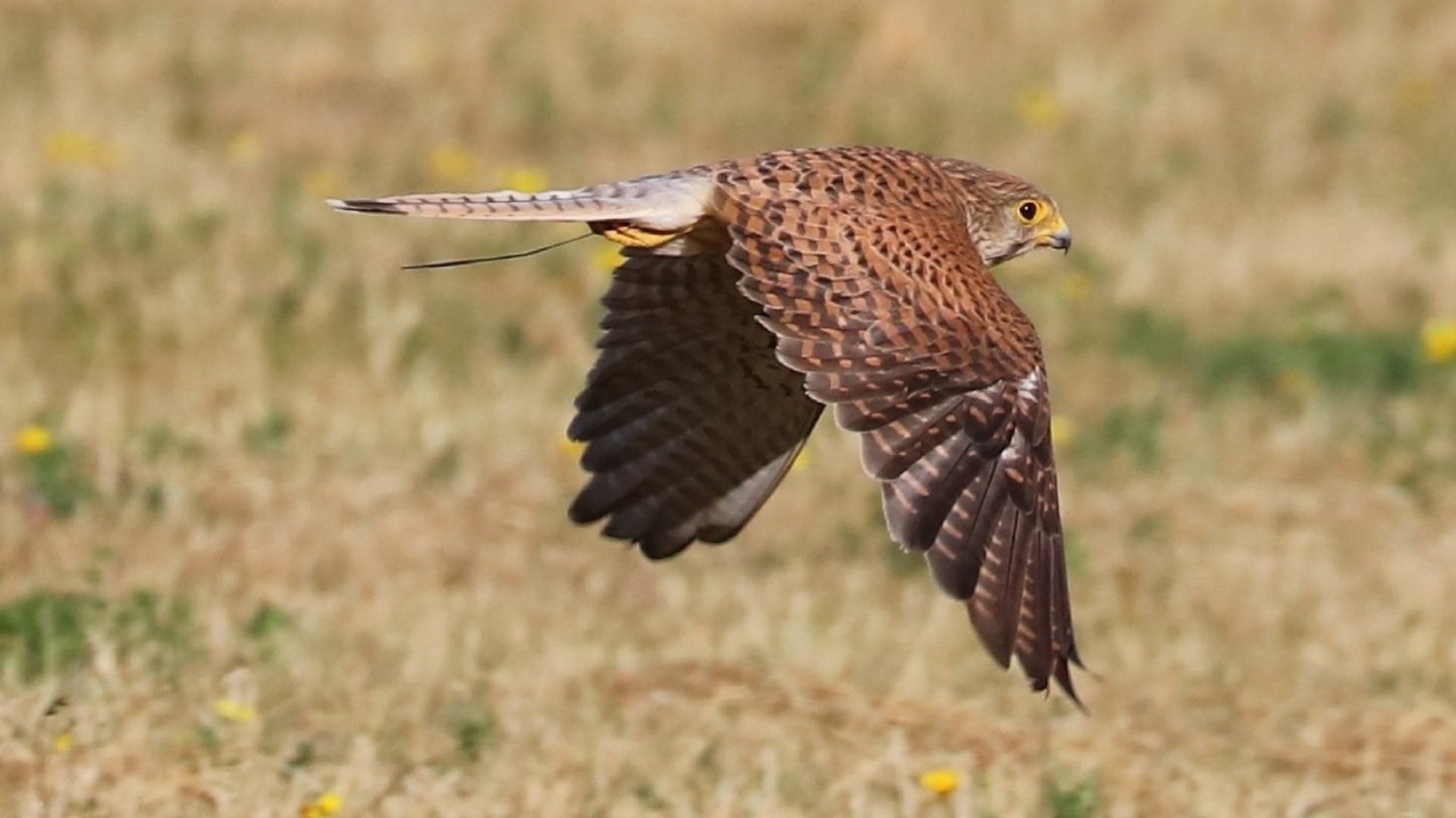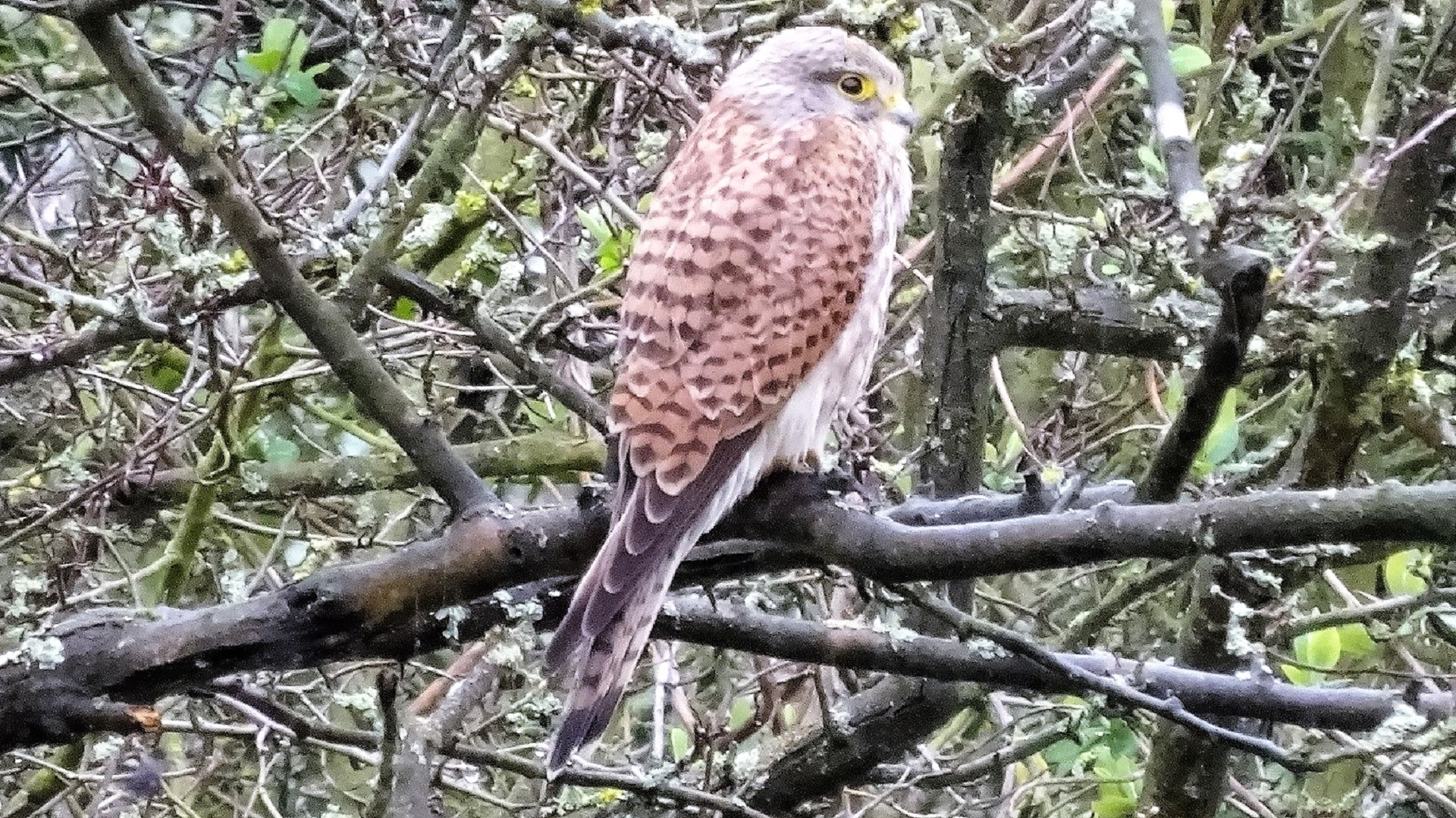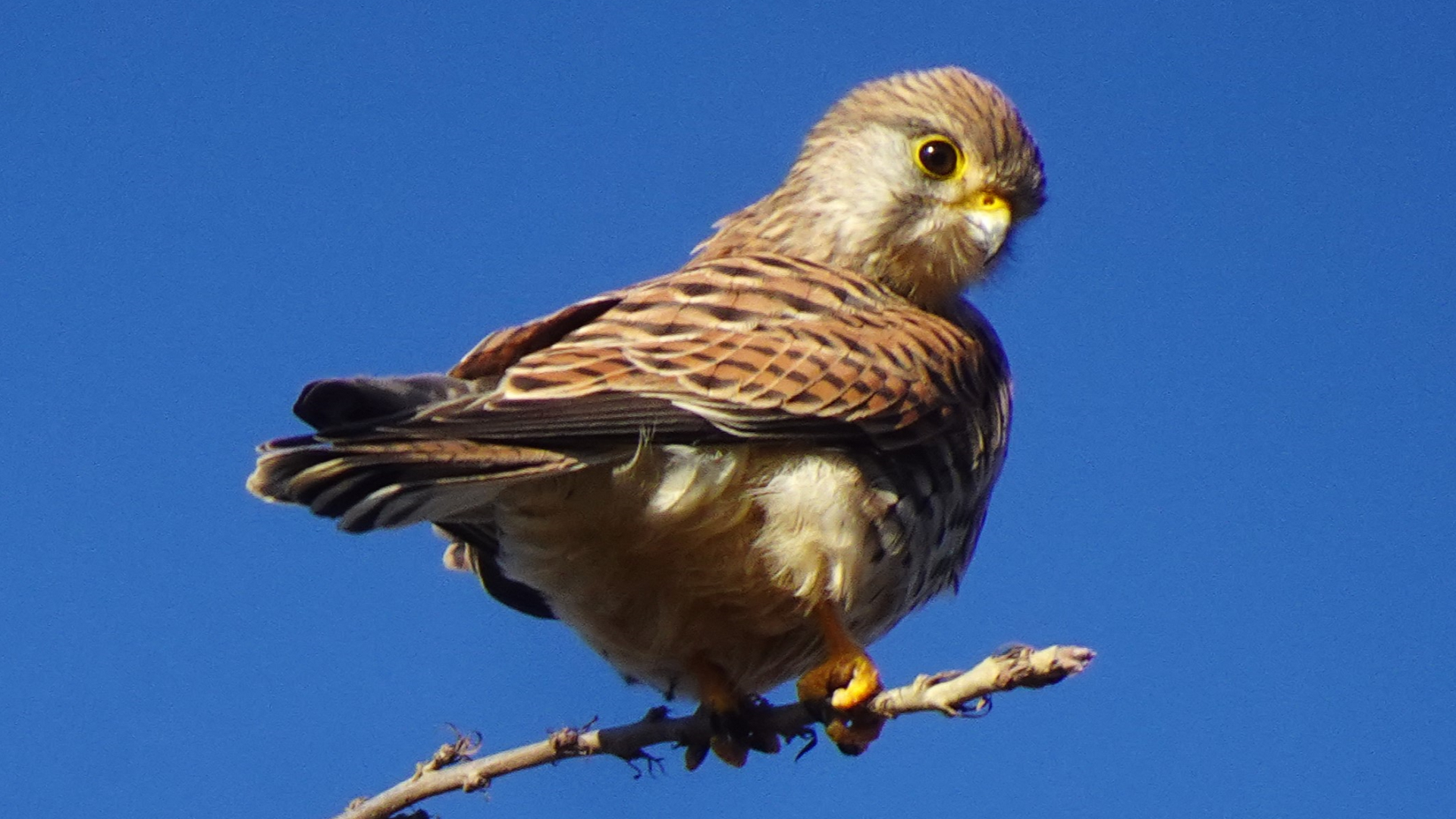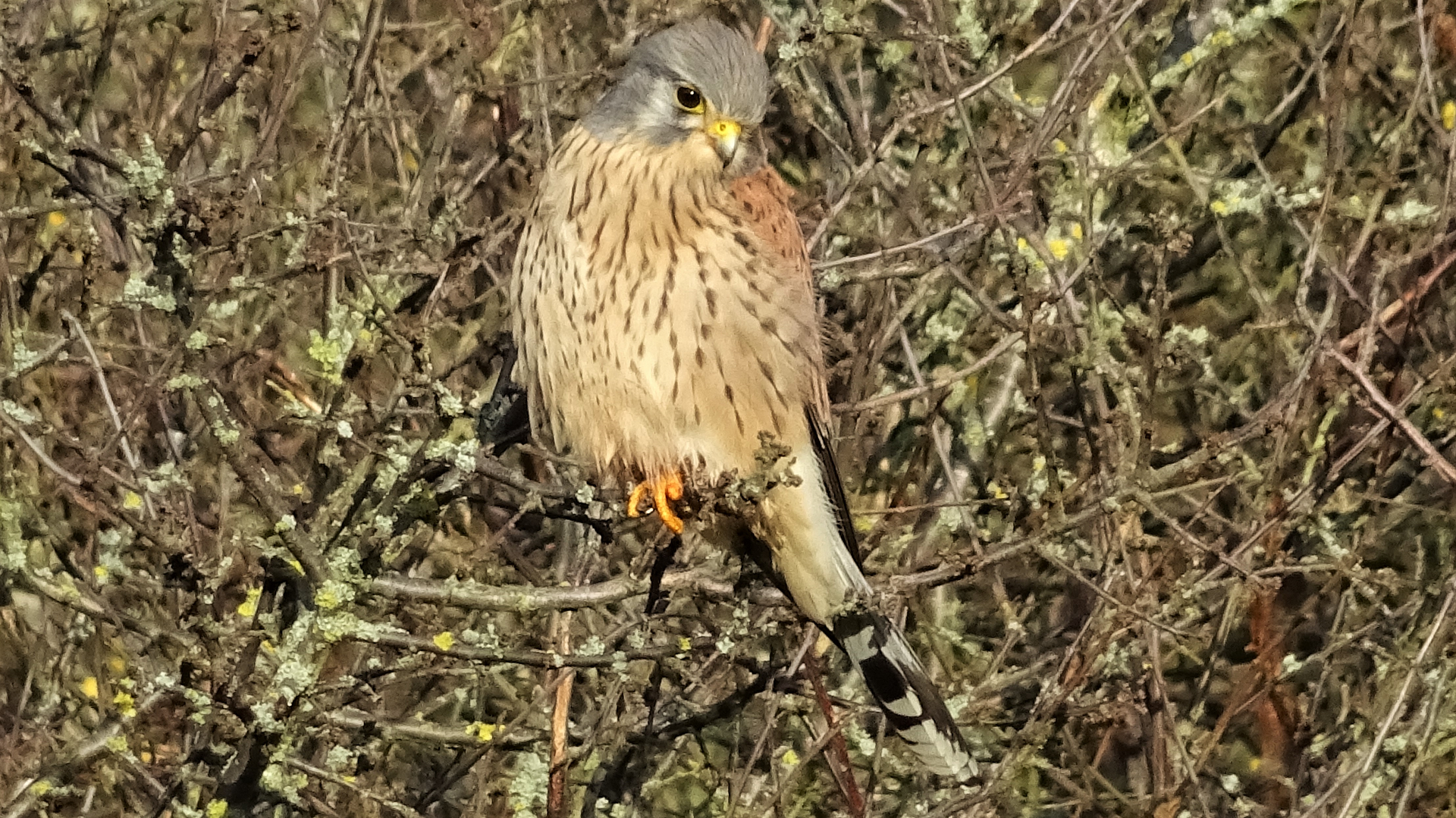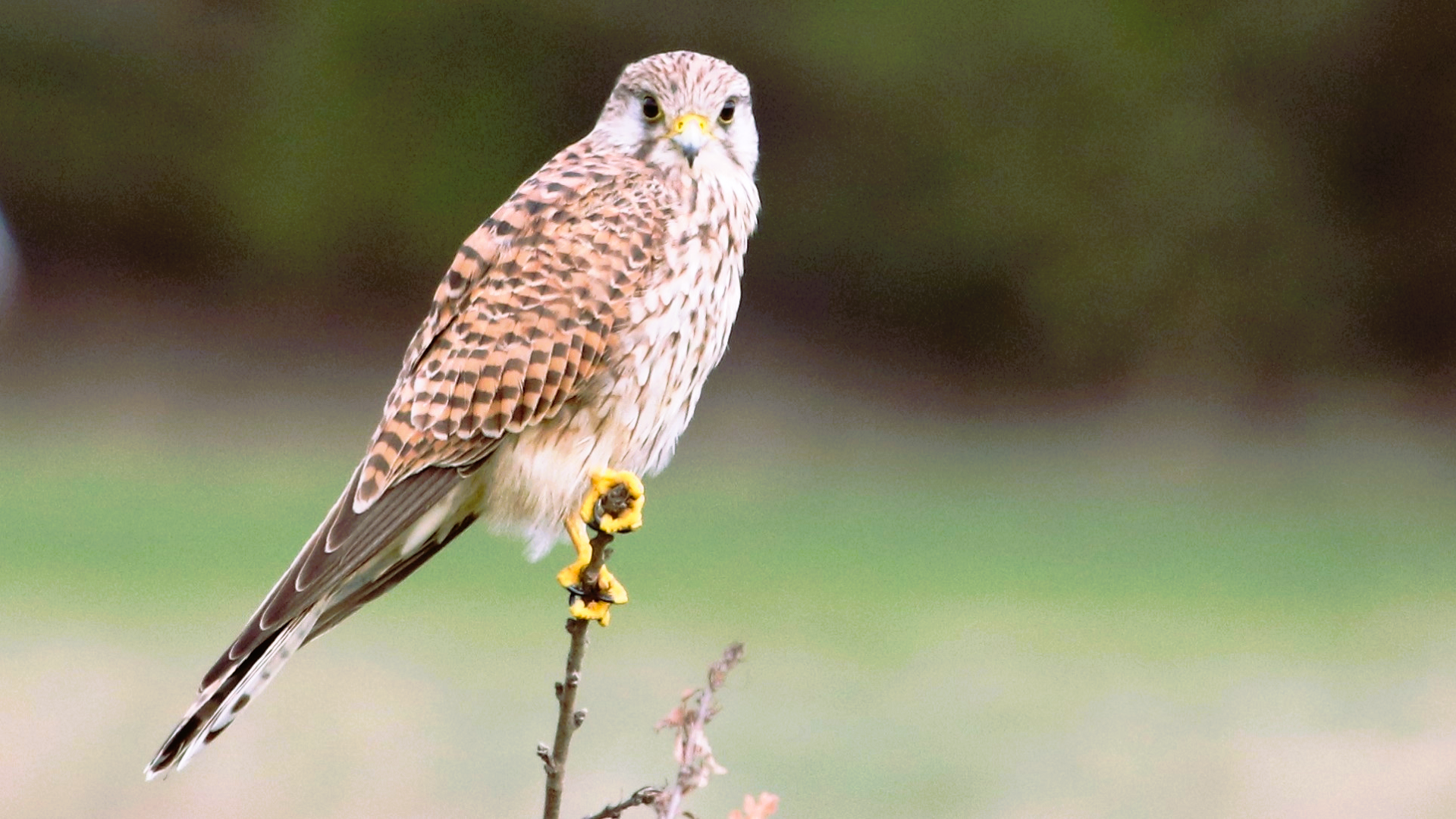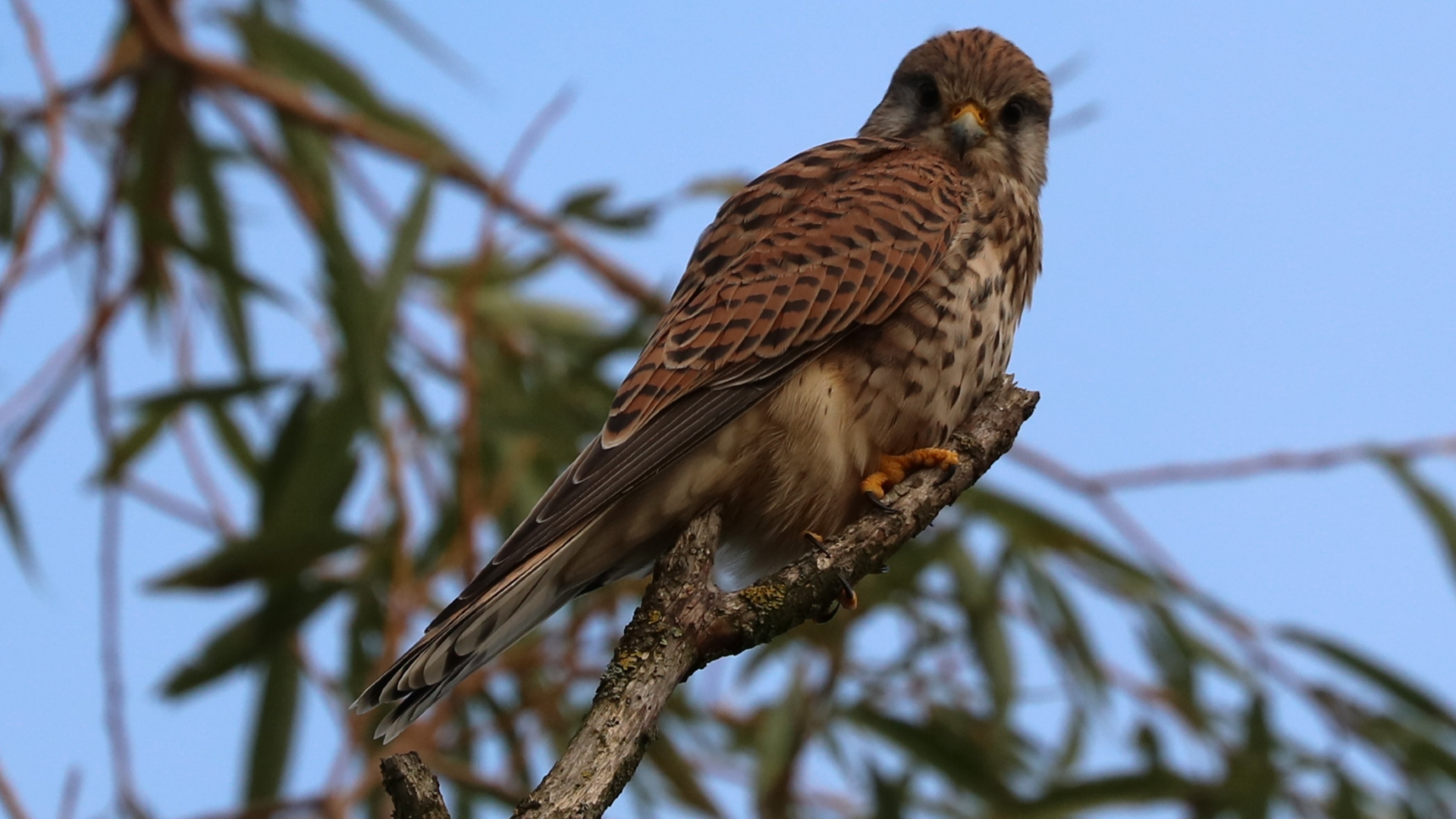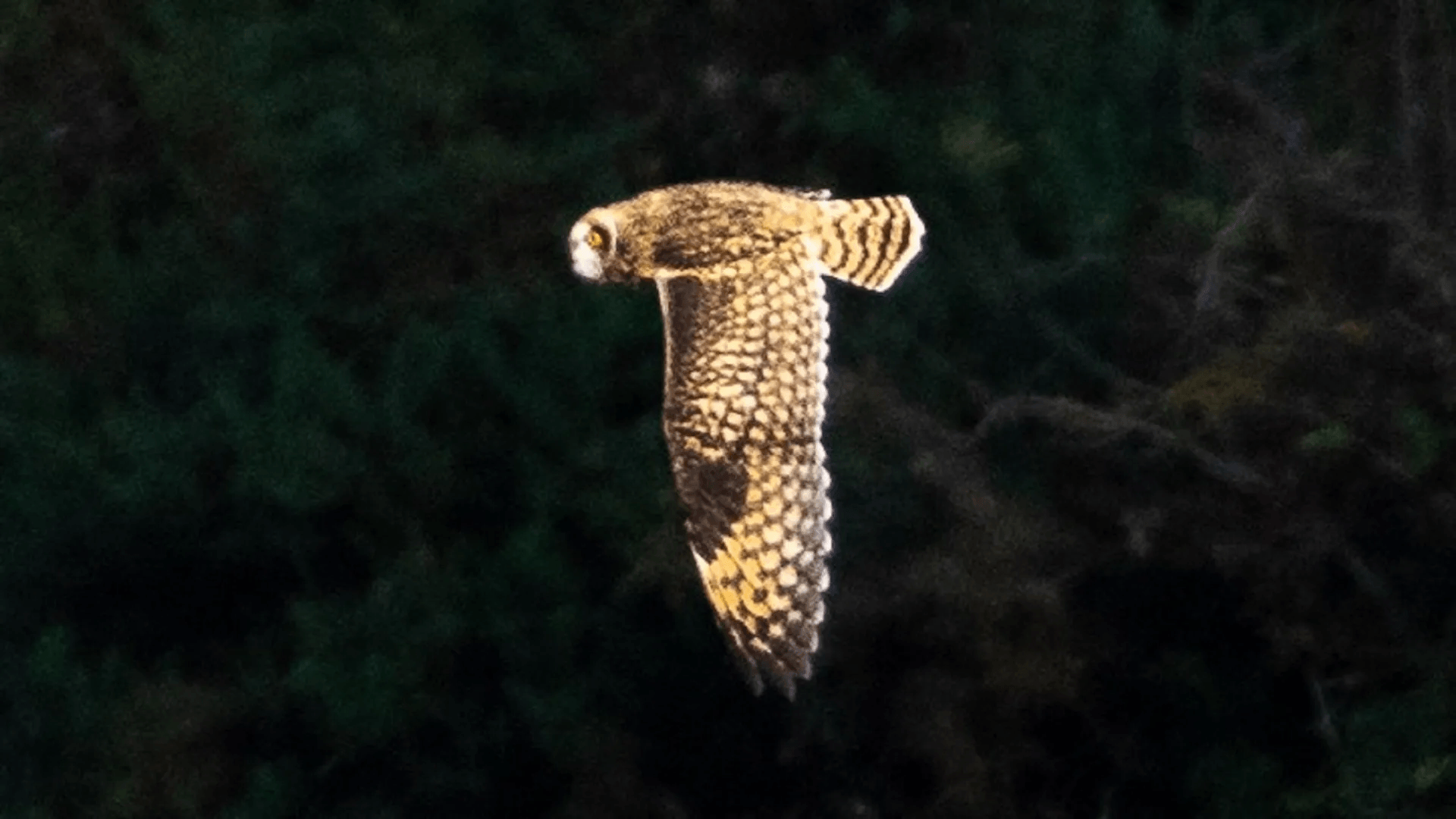BIRDS
BIRDS OF PREY
Red Kites were saved from becoming extinct in the UK and have now been successfully re-introduced. They are reddish-brown with a forked tail that distinguishes them from buzzards. Their diet consists of carrion, small mammals and worms.
Sparrowhawks have bright yellow or orangish eyes, the colour of the eyes is a helpful guide when identifying this species. Males are smaller than females and have bluish-grey backs and wings. Females and immature birds have brown backs and wings. Because Sparrowhawks mainly feed on small birds they are sometimes seen in gardens with bird tables.
The Goshawk is a large bird with yellow eyes and distinctive white eyebrows. It weaves in and out of trees hunting for prey that it is able to grab with its talons when in flight. Goshawks feed on small birds and mammals.
Buzzards are now Britain's most widespread bird of prey. They emit a cat-like meowing call and are often seen in small groups. Their diet consists of mammals, birds, carrion, worms and insects.
The Harris's Hawk is known in South America for the way it hunts cooperatively in packs. It is a social bird attributed with a high degree of intelligence, making them easy to train and a popular choice for use in falconry. The one pictured is probably an escapee, however they are occasionally recorded in the wild in this country. They feed mainly on small mammals, reptiles and small birds.
Kestrels feed on small mammals, birds, worms and insects. They are often seen hovering over the meadows looking for voles and mice. Their superb eyesight can spot insects from a distance equivalent to roughly the width of a football pitch. Ultraviolet vision allows them to spot urine trails left by rodents making prey easier to locate. Kestrels must eat 4-8 voles a day. Females have brown head feathers and have black bars across the tail. Males have greyish heads and an all grey tail with a black band at its base. Both sexes have yellow feet, yellow around the eyes and yellow skin above their beaks.
The Short-eared Owl hunts during daytime feeding on field voles and small birds.
© hainaultforest.net. All rights reserved.


